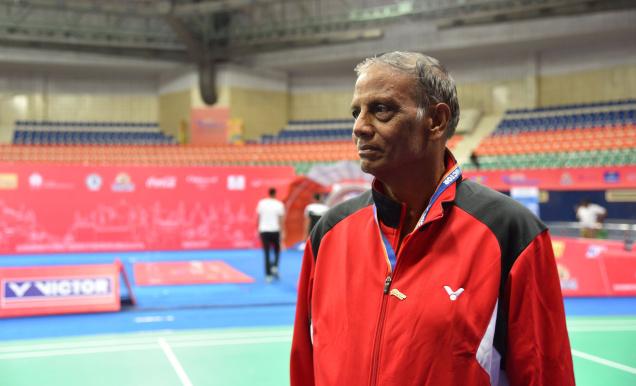
City badminton official Kunta Pani Rao will be a referee for the BWF Super Series
For Kunta Pani Rao, the affable badminton official for the last four decades, the recently-concluded Badminton Asia team championship in Hyderabad was one more assignment that enhanced his value and contribution for the successful conduct of the event as the Badminton World Federation (BWF) referee.
This 64-year-old soft-spoken person has now been nominated as one of the three BWF referees for the BWF Super Series in Delhi next month.
“Yes, it has been a long journey which began first as a Sports Authority of India coach. Those days, the salary was less, no pension and Provident Fund benefits and the threat of being transferred also was there. Just then I got the job in the State Bank of India which I took up to spend more time in badminton,” recalls Pani Rao.
Interestingly, when Pani Rao officiated for the first time ever in the Junior National, he saw Madhumita Bist (now India’s women’s coach) win the title in the early 1970s. “Things have changed – in some issues for the good. But, the job basically remains the same. To be a good and respected umpire or referee, you have to know the game better and not just thrive on the technicalities,” reminds the veteran official who owes his growth to former BAI secretary Ahmed Hussain and to the current BAI secretary (tournaments) K.Ch. Punnaiah Choudhary.
This Hyderabadi, who officiated in the 1986 Seoul Asian Games, has turned an international umpire in 1994 and having crossed the superannuation age of 55, is now a qualified BWF referee which means he can do the job till he turns 65.
“Essentially, the referee is the overall in-charge of the tournament, responsible for the posting of umpires, finalising the schedule and resolving any on-court disputes,” reminds Pani Rao. “Every official is under scrutiny for the Badminton Asia Confederation makes a critical assessment of every technical official and allots the next assignment accordingly,” he points out.
Pani Rao welcomes the instant review system in place when a player opts for a video review of any point in dispute. “This vastly reduces the scope for errors by line judges. But again, it is available only on one court, instead it could be extended to other courts as well for better results,” he feels.
Pani Rao is a big fan of the Indian badminton legend Prakash Padukone. “Prakash is a gentleman to the core. I was officiating in Vijayawada when Syed Modi shocked him in the Senior National final in 1981. I vividly remember Prakash, then All England champion, had come two days late for that event. He was not well in fact and found it difficult to adjust to the conditions there,” recalls Phani Rao.
What next? “Once I retire from the BWF role next year, I would love to take up coaching which I enjoy a lot. I was mostly the State coach in those days and played my bit in the evolution of many champions like Manoj Kumar, Gopichand and Chetan Anand,” he signs off.
source: http://www.thehindu.com / The Hindu / Home> Features> MetroPlus / by V.V.Subrahmanyam / Hyderabad – December 24th, 2016

